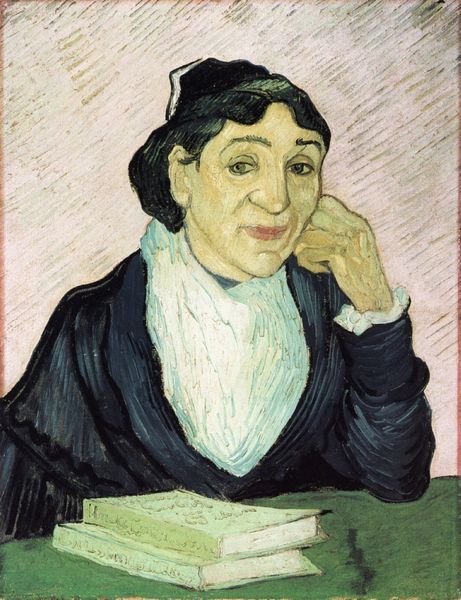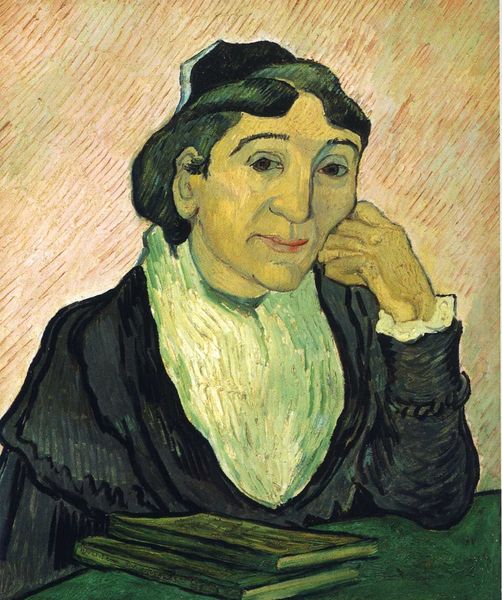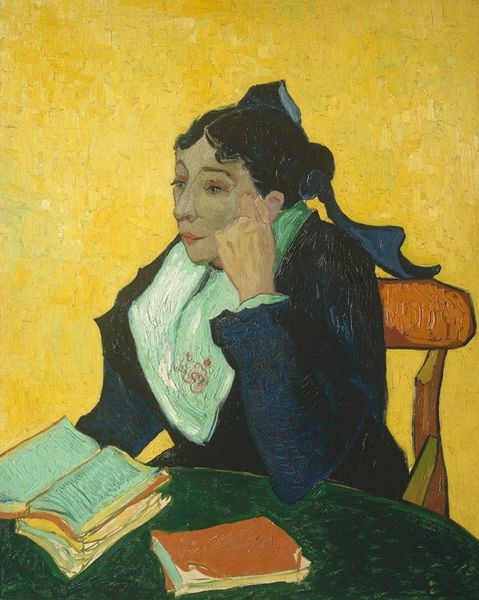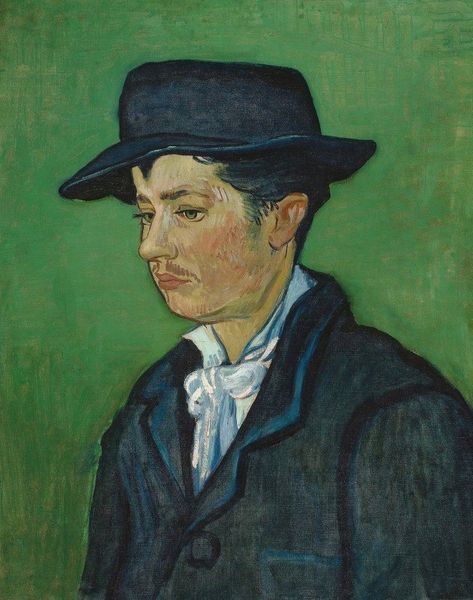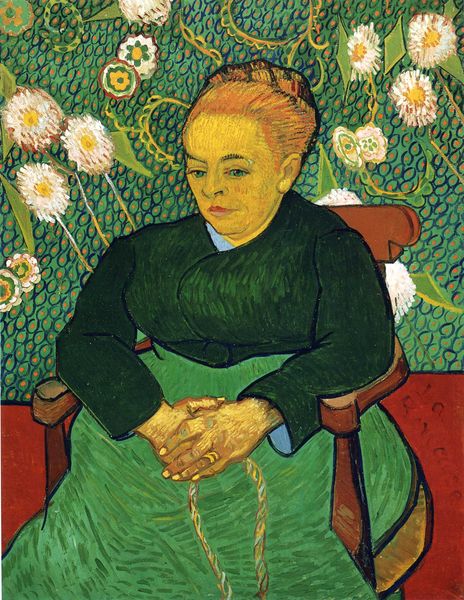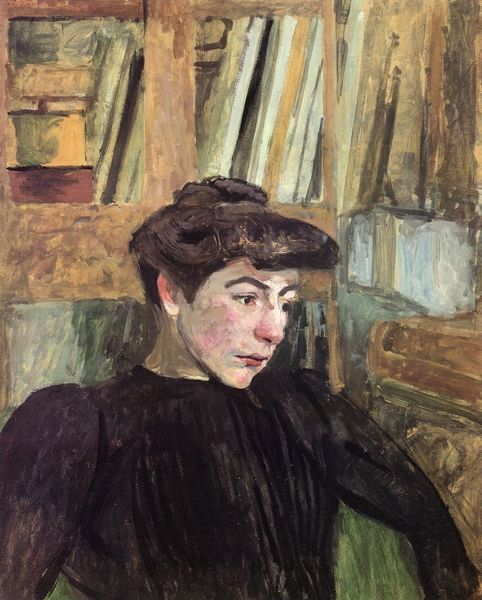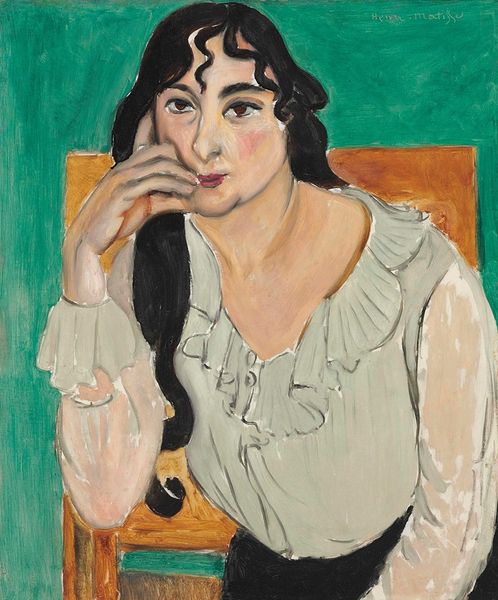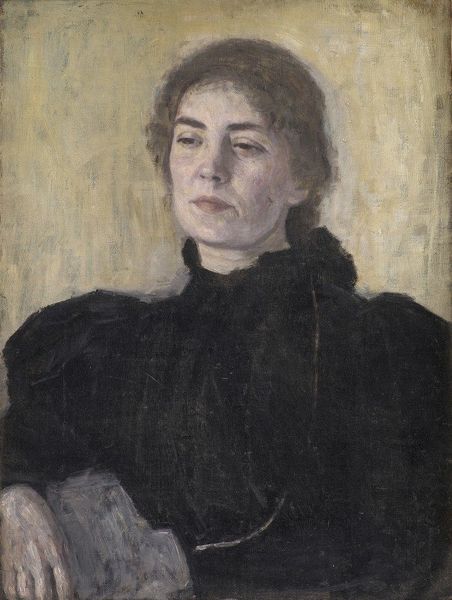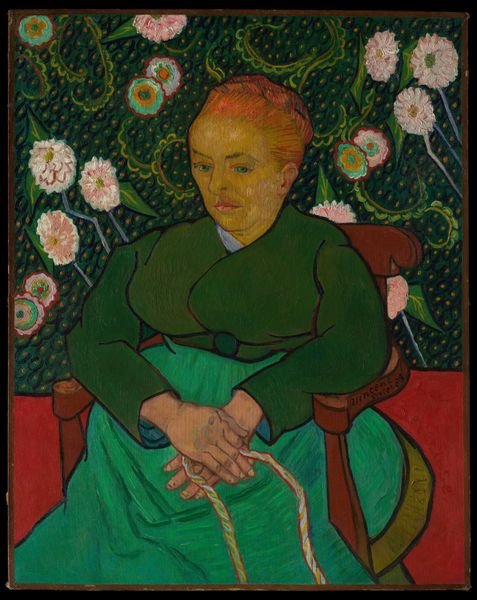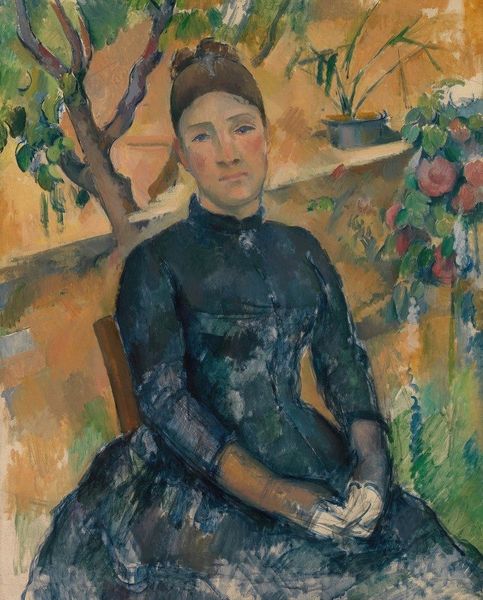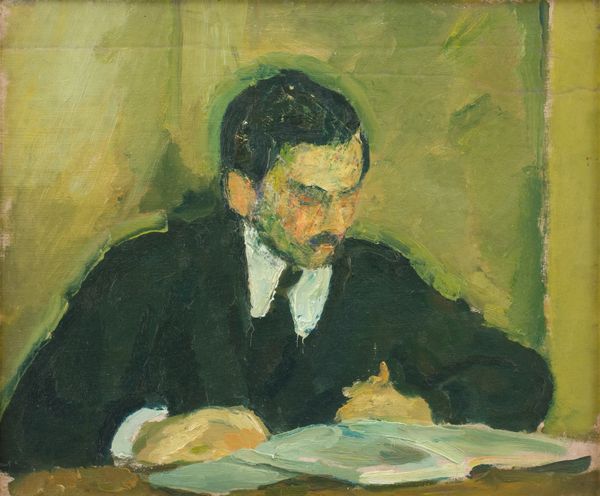
oil-paint, impasto
#
portrait
#
oil-paint
#
oil painting
#
impasto
#
portrait reference
#
post-impressionism
#
portrait art
Copyright: Public Domain: Artvee
Curator: Painted in 1890, Vincent van Gogh's "The Woman from Arles," rendered in oil paint with striking impasto, offers an intimate portrayal. Editor: Immediately, I’m struck by the quietness. There's a somber air to her expression, intensified by the restrained palette. I see someone burdened by something, maybe loneliness? Curator: That melancholic reading resonates. It's important to consider that this portrait, representing Madame Ginoux who ran the Cafe de la Gare, was painted while van Gogh was institutionalized. It carries the weight of his struggles with mental health. The historical context certainly deepens the piece. Editor: Absolutely. Looking closer, the textures draw me in. The visible brushstrokes aren't just a technique, they are part of the art and labor, highlighting the sheer effort and deliberate choices Van Gogh made with materials like oil and canvas. We feel the handmade quality, the almost tactile sense of production. Curator: It is interesting you highlight labor since Van Gogh produced many replicas, for himself and his family. The question then becomes what value each individual portrait of Madam Ginoux then carries for Van Gogh as it related to artistic explorations and monetary or sentimental compensation to himself or his brother Theo. Editor: It begs the question of artistic production. Does the meaning dilute by sheer duplication? Or does it enrich through repetition, becoming a ritualistic form of creation, where the value is located more specifically in the material act than in an object valued within consumer capitalism. Curator: It is curious to me as to what Van Gogh thought about the public exhibition and display of portraits such as this one, knowing as he was, that portraits were such powerful symbols in contemporary Europe. He surely realized his role as the unstable individual from the periphery could serve a didactic function and purpose in late 19th-century European discourse? Editor: Thinking about "The Woman from Arles" again, perhaps the layers of paint echo the layers of identity. She is both a portrait, a product of intense material action and a document, of social circumstance and even a conduit to the maker himself. Curator: Indeed. The painting opens a fascinating view onto social history and material construction in art.
Comments
No comments
Be the first to comment and join the conversation on the ultimate creative platform.
